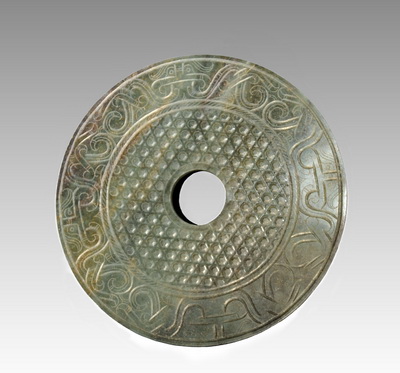In ancient China, dating back to at least 5,000 BC, large stone discs were placed on the bodies of Chinese aristocrats. Their original function still eludes scientists, as does the way in which they were made, considering they were carved out of Jade, an extremely hard rock.
Jade is a precious hardstone that is made of different silicate minerals and is often used to make vases, jewellery and other ornaments. It is usually colourless, but contamination from other materials, such as chrome, normally gives it an emerald greenish colour, and it comes in two main types: nephrite and jadeite.
Given the hardness of the stone, Jade is an extremely difficult material to work with, which makes it perplexing as to why the ancient Neolithic inhabitants of China chose this stone.
The Jade Discs, often called bi discs, are round flat rings created from nephrite by the Liangzhu culture during the late Neolithic Period. They appear to have been very important to their society because they have been found laid on the bodies of the dead in almost all important tombs of the Hongshan culture (3800 – 2700 BC), and carried on into the Liangzhu culture (3000 – 2000 BC).
Continued...
Source
Jade is a precious hardstone that is made of different silicate minerals and is often used to make vases, jewellery and other ornaments. It is usually colourless, but contamination from other materials, such as chrome, normally gives it an emerald greenish colour, and it comes in two main types: nephrite and jadeite.
Given the hardness of the stone, Jade is an extremely difficult material to work with, which makes it perplexing as to why the ancient Neolithic inhabitants of China chose this stone.
The Jade Discs, often called bi discs, are round flat rings created from nephrite by the Liangzhu culture during the late Neolithic Period. They appear to have been very important to their society because they have been found laid on the bodies of the dead in almost all important tombs of the Hongshan culture (3800 – 2700 BC), and carried on into the Liangzhu culture (3000 – 2000 BC).
Continued...
Source























